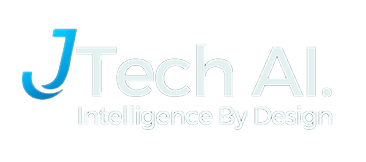Boost Efficiency with AI Workflow Optimization
- Jeremiah Jenkins
- Nov 10
- 4 min read
Artificial intelligence (AI) is transforming how we work by making processes faster, smarter, and more efficient. Many organizations face challenges with repetitive tasks, slow decision-making, and scattered data. AI workflow optimization offers a practical way to tackle these issues, helping teams focus on what matters most. This post explores how AI can improve workflows, with clear examples and actionable tips to boost productivity.

AI dashboard showing workflow automation and task tracking
Understanding AI Workflow Optimization
AI workflow optimization means using AI tools to improve the steps involved in completing tasks. It focuses on reducing manual work, speeding up processes, and improving accuracy. Instead of replacing people, AI supports teams by handling routine tasks and providing useful insights.
For example, AI can automatically sort emails, schedule meetings, analyze data, or generate reports. This frees up time for employees to focus on creative and strategic work.
Key Benefits of AI Workflow Optimization
Time savings: Automating repetitive tasks cuts down hours spent on manual work.
Improved accuracy: AI reduces human errors in data entry and calculations.
Faster decisions: AI analyzes large data sets quickly, helping teams make informed choices.
Better resource use: Teams can focus on high-value activities instead of routine chores.
Scalability: AI workflows can handle growing workloads without extra staff.
How AI Improves Common Workflows
Automating Routine Tasks
Many jobs include repetitive tasks like data entry, invoice processing, or customer support. AI tools can automate these tasks with minimal setup. For example:
Invoice processing: AI reads invoices, extracts key details, and enters them into accounting systems.
Customer support: Chatbots handle common questions, freeing human agents for complex issues.
Email management: AI sorts and prioritizes emails based on content and urgency.
This reduces errors and speeds up processes, allowing teams to focus on more meaningful work.
Enhancing Data Analysis
AI can process large volumes of data faster than humans. It identifies patterns, trends, and anomalies that might be missed otherwise. For example:
Sales teams use AI to analyze customer behavior and predict buying trends.
Marketing teams track campaign performance in real time and adjust strategies quickly.
Operations teams monitor supply chains to spot delays or risks early.
With AI-powered insights, teams make better decisions and respond faster to changes.
Streamlining Collaboration
AI tools can improve communication and coordination across teams. For example:
AI schedules meetings by finding the best times for all participants.
It summarizes long email threads or documents to highlight key points.
AI-powered project management tools track progress and send reminders automatically.
These features reduce misunderstandings and keep projects on track.
Practical Steps to Implement AI Workflow Optimization
Identify Bottlenecks
Start by mapping your current workflows and spotting slow or error-prone steps. Ask questions like:
Which tasks take the most time?
Where do errors happen most often?
What tasks feel repetitive or boring?
This helps focus AI efforts where they will have the biggest impact.
Choose the Right AI Tools
Select AI solutions that fit your needs and integrate well with existing systems. Popular categories include:
Robotic Process Automation (RPA) for repetitive tasks
Natural Language Processing (NLP) for text analysis and chatbots
Machine Learning for data analysis and predictions
Test tools with small projects before scaling up.
Train Your Team
AI works best when people understand how to use it. Provide training on:
How AI tools fit into workflows
How to interpret AI-generated insights
How to handle exceptions or errors
Encourage feedback to improve AI adoption.
Monitor and Improve
Track performance metrics like time saved, error rates, and user satisfaction. Use this data to refine AI workflows and address new challenges.
Real-World Example: AI in Customer Service
A mid-sized e-commerce company faced slow response times and high workload in customer support. They implemented an AI chatbot to handle common questions about orders, returns, and shipping. The chatbot resolved 60% of inquiries instantly, reducing wait times and freeing agents to focus on complex cases.
The company also used AI to analyze customer feedback and identify product issues faster. This led to quicker fixes and improved customer satisfaction scores.
Common Challenges and How to Overcome Them
Resistance to change: Involve employees early and show how AI helps their work.
Data quality issues: Clean and organize data before applying AI tools.
Integration problems: Choose AI solutions compatible with existing software.
Overreliance on AI: Keep humans in the loop for critical decisions.
Future Trends in AI Workflow Optimization
AI will continue to evolve, offering more personalized and adaptive workflows. Expect advances like:
AI that learns from user behavior to suggest next steps
Voice-activated AI assistants for hands-free task management
Greater use of AI in creative tasks like content creation and design
Staying informed about these trends will help organizations keep workflows efficient and competitive.
AI workflow optimization offers clear benefits by automating routine tasks, improving data analysis, and enhancing collaboration. By carefully selecting tools, training teams, and monitoring results, organizations can boost productivity and focus on what matters most. Start small, learn from experience, and build smarter workflows that grow with your needs.



Comments